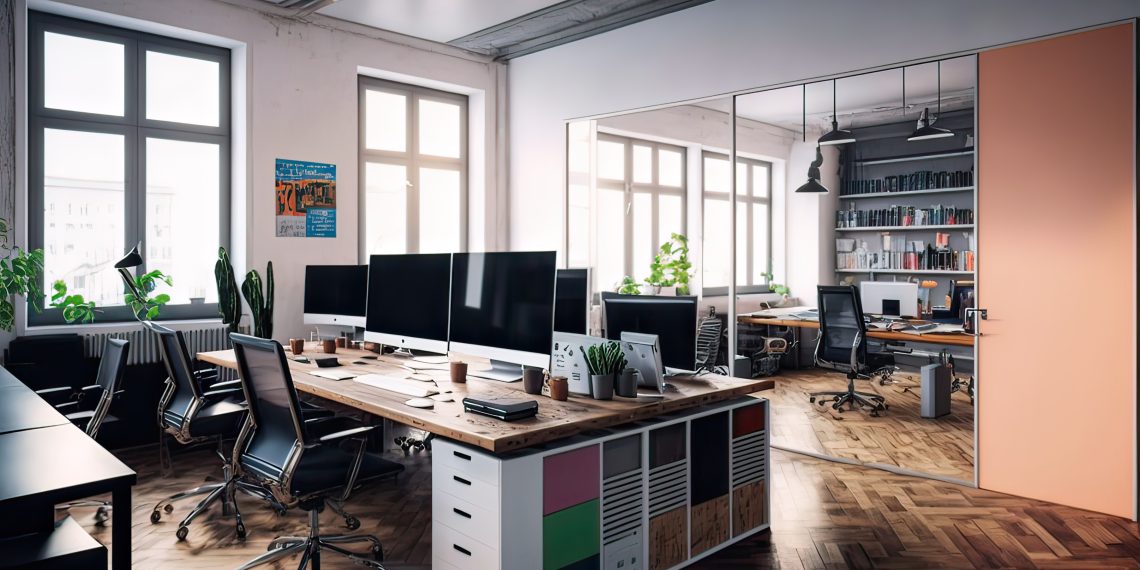Creating a functional office with limited space can be challenging, but it’s not impossible. With the correct planning and organisation, you can maximise your space and create an efficient workspace that meets all your needs. A functional office encourages proper workflow. It also reduces the risk of people being in each other’s spaces or having equipment all over, which may be seen as hazardous.
In this article, we will discuss some valuable tips for creating a functional office with limited space.
1. Assess Your Needs
The first step to creating a functional office is to assess your needs. Consider the type of work you do, the equipment and tools you need, and the storage space required. Once you have a firm grasp of your needs, you can start planning the layout of your office.
Your essential equipment should be your number one priority. Start by listing the equipment and furniture you need in your office and prioritising them according to their importance. This process would help you get everything you need in the office all at once.
Consider the size and functionality of each item and determine which ones you need to perform your work. Anything not required would take up space. The key to utilising your space is being smart about your office layout.
2. Choose The Right Furniture
When it comes to furniture, it is crucial to choose pieces that are functional and space-saving. For example, a corner desk can help you maximise your limited space while providing ample workspace.
Consider using a desk with built-in storage solutions such as drawers, shelves, and cabinets. A wall-mounted rack or a floating desk can also be an excellent option for small spaces. A chair that doubles as a storage solution or a footrest can also be a perfect option for small spaces. Also, you can consider buying an ergonomic office chair for your comfort and high productivity.
Consider purchasing furniture that has several uses. For example, a storage ottoman can function as seating, storage, and a footrest. Freedman’s office furniture has been specially designed to optimise office space. Getting multiple purposes eliminates the need for different furniture to meet different uses.
Here you would be able to save space and cut down costs on furniture procurement. A sense of space can be achieved by selecting furniture proportionate to the space’s size. Using large furniture pieces that occupy a lot of visual space should be avoided.
3. Go Digital
You should invest in space-saving technology. Use compact and efficient technology, such as a laptop or all-in-one printer, to save space. Going digital reduces the need to buy multiple pieces of equipment to carry out work, which takes up more space than planned. For example, a printer that functions as a scanner and copier can save you valuable desk space. This also frees up space that would have been marked out for other functions like a copy room.
Try to go as paperless as possible. Use digital tools like cloud storage and online project management software to reduce the paper you use. This reduces the space taken up by unnecessary paper and files. Going digital can help reduce clutter and free up space in your office. This eliminates the need for a file room and bringing in unnecessary cabinets into the office that would have taken up space.
4. Keep It Simple And Organised
When you have limited space, it is crucial to keep things organised and straightforward. Clear your space of clutter and other items that take up precious space. Keep your desk and workspace tidy by using organisers and filing systems. You can also use colour coding or labelling to make it easy to find what you need.
A small space can quickly feel cluttered and messy, so clean and organised regularly. A tidy workspace can significantly affect how functional and comfortable your office feels. You can mark out specific spots for items that are not in use to be stored. This would greatly enhance the flow of work in the office.

5. Optimise Your Storage
Storage is crucial in any office and even more critical when you have limited space. You should consider using vertical space by installing shelves or storage cabinets up to the ceiling. You can also use under-desk storage solutions like rolling cabinets or file drawers.
Use storage containers or file organisers to keep your desk and workspace clutter-free. It would be best if you decluttered regularly. Clutter can quickly accumulate in a small office, making it feel cramped and disorganised. Regularly declutter and organise your space to keep it functional and efficient.
6. Maximise Natural Light
A small space can feel more prominent and more open with the help of natural light. Try to place your desk close to a window to maximise natural light. Mirrors can also reflect light and provide the impression of additional space. Use light-coloured curtains to allow more natural light into your office. Using natural light gives the illusion of having a much larger area.
Use colour wisely. Choose light, neutral colours for your walls and furniture to create an open, airy feel. White, cream, and pastel hues are examples of light colours that can open up and brighten a tiny area.
Light-coloured walls and ceilings might give the impression that the room is larger. Use pops of colour in your accessories to add interest and personality to your space. Dirty windows can prevent natural light from entering the space. Ensuring your windows are regularly cleaned can help maximize the amount of natural light entering the space.
7. Get Creative
Finally, don’t hesitate to get creative when creating a functional office with limited space. Consider using wall space for a bulletin board or whiteboard. Use a tension rod and curtains to create a private workspace. Repurpose items such as a bookshelf as a desk or a dresser as a storage solution.
The DIY approach reduces the cost of office supplies and gives the office a personal touch. A small space can have visual depth and interest by using wallpaper with a modest pattern or texture. By taking attention from the room’s size, you might help the space appear larger.
Conclusion
A proper strategic tool is an office that works. At its best, it will encourage cooperation, advance learning, establish a good atmosphere, and balance public and private workspace.
Creating a functional office with limited space requires careful planning and organisation. By assessing your needs, choosing the right furniture, optimising your storage, maximising natural light, and keeping it simple and organised, you can create an efficient workspace that meets all your needs.







